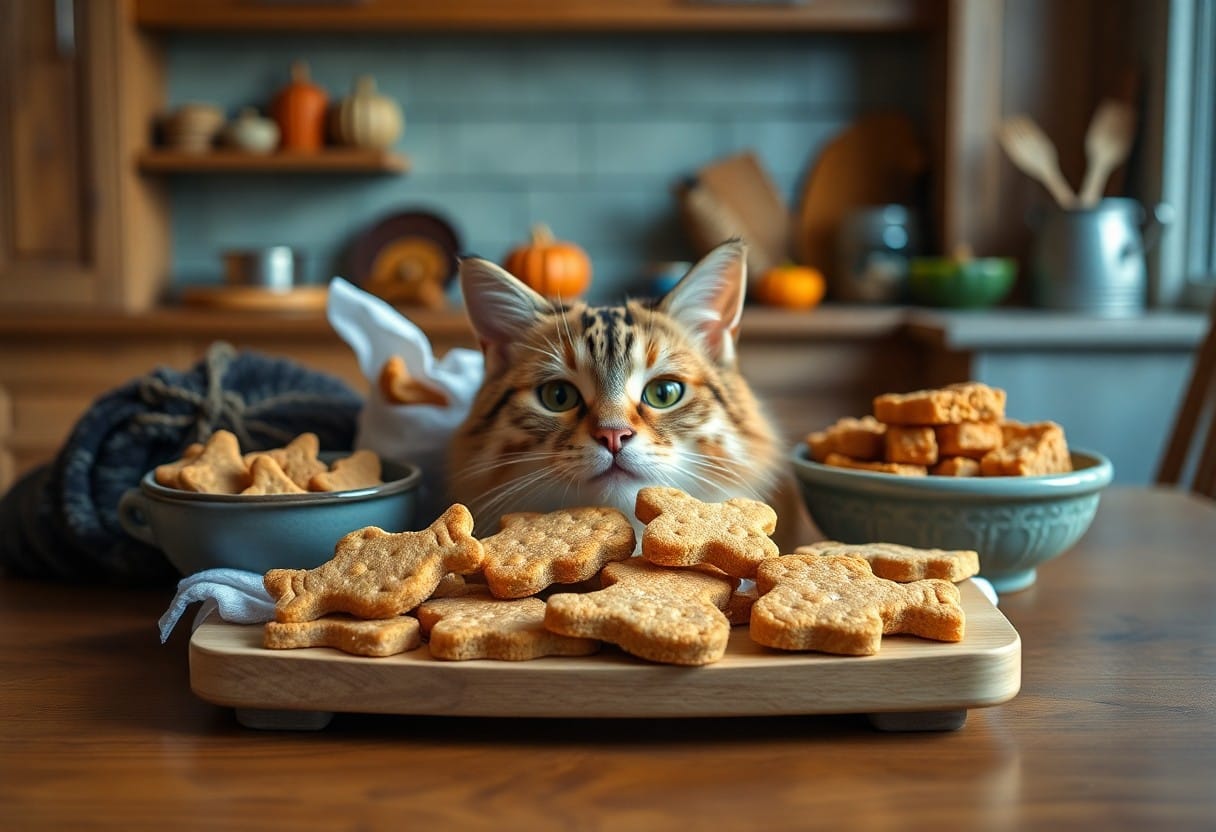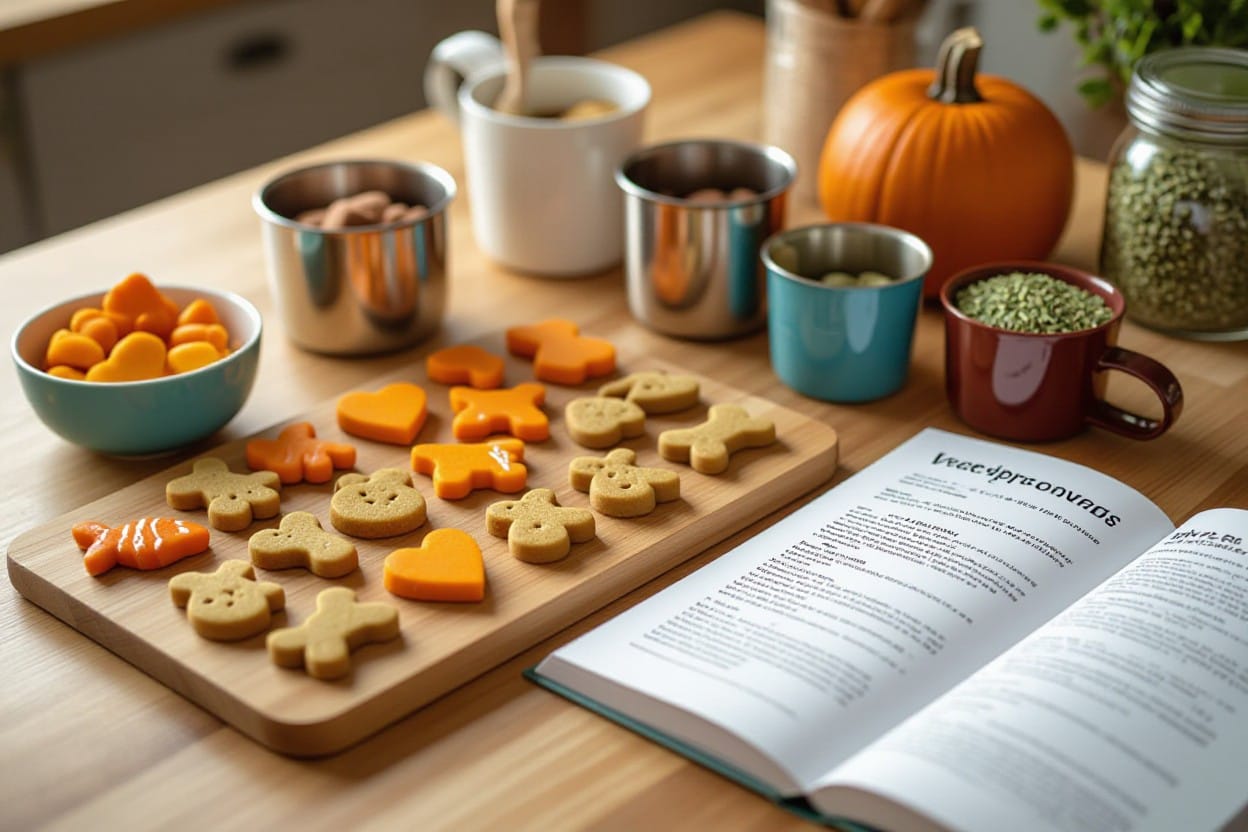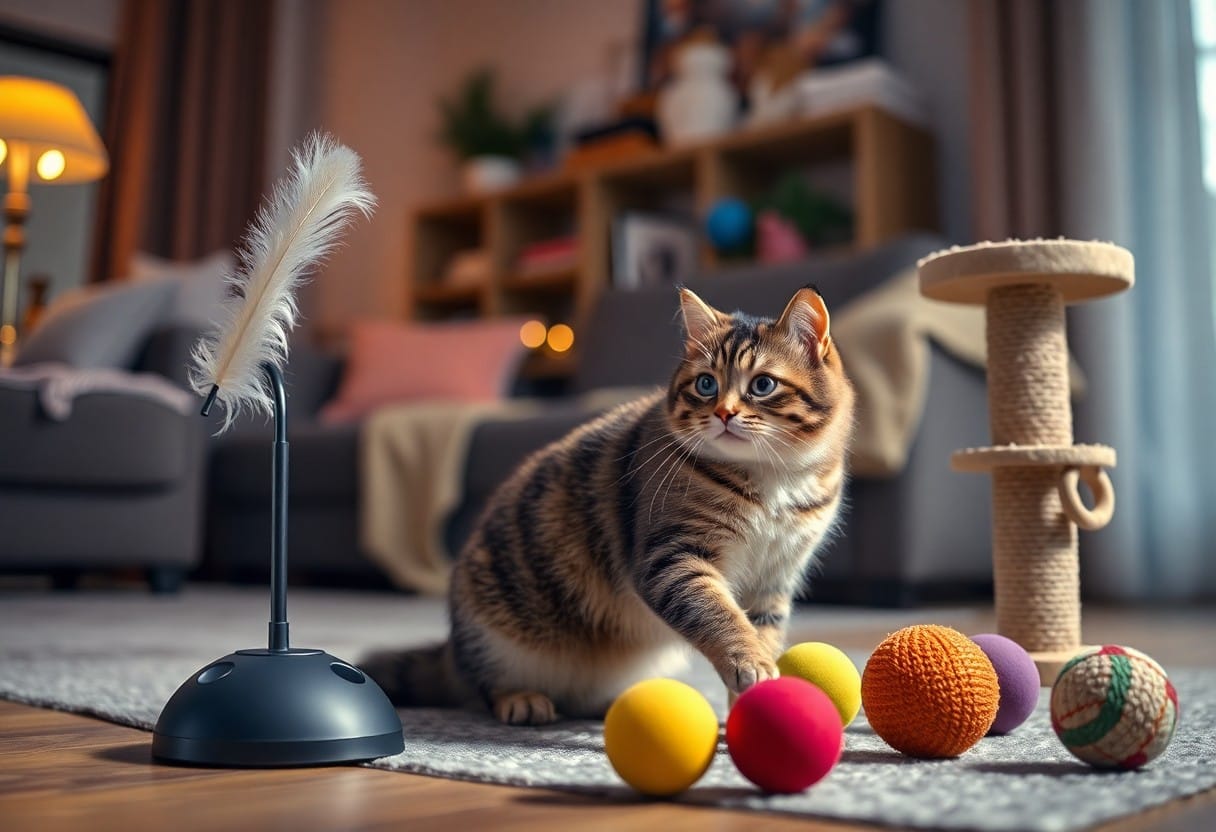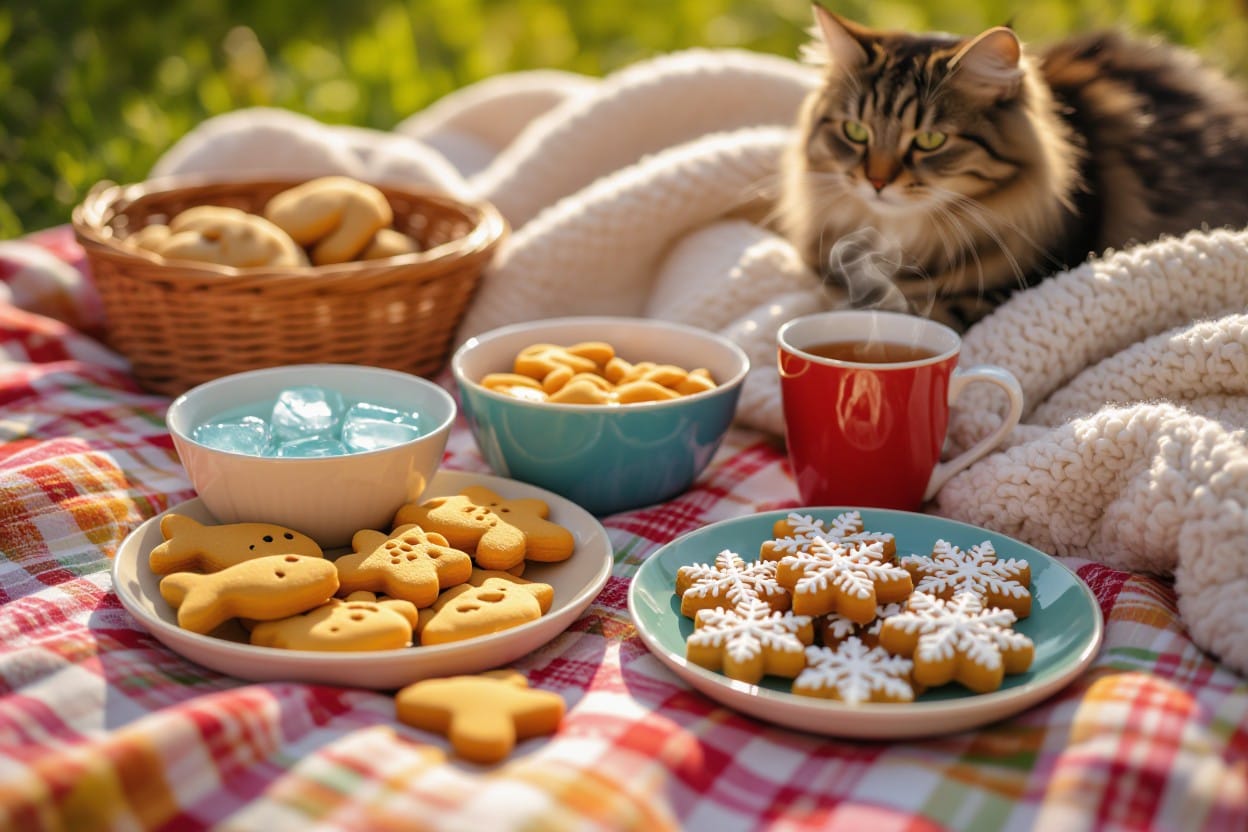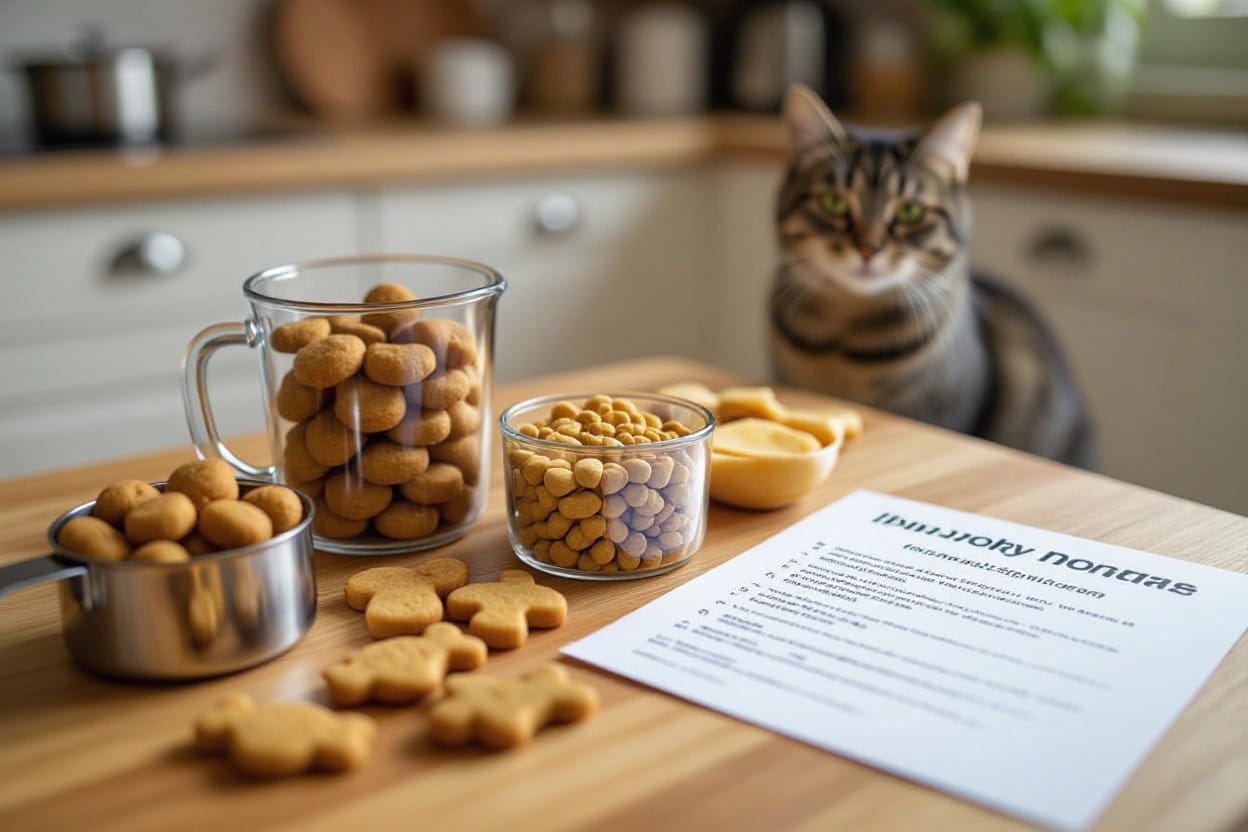Most cats can be finicky, turning their noses up at store-bought treats that don’t meet their high standards. By making homemade cat treats, you not only cater to their discerning palates but also control the ingredients, avoiding harmful additives. With just a few simple recipes, you can create nutritious and delicious snacks that will keep your furry friend happy and healthy. In this post, you’ll discover easy-to-follow recipes that are perfect for even the pickiest eaters, ensuring your cat enjoys every bite.
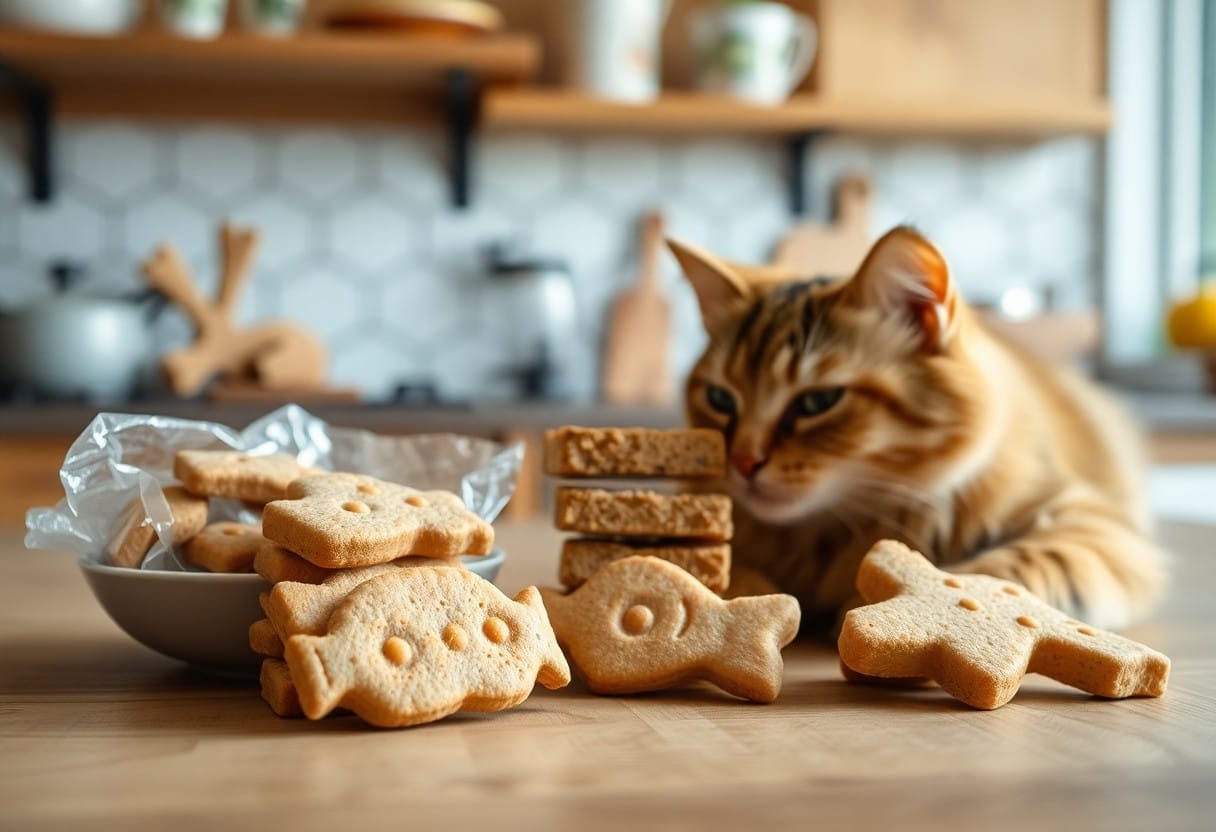
Key Takeaways:
- Customizable Ingredients: Homemade cat treats allow you to tailor the ingredients to suit your cat’s preferences and dietary needs, ensuring they enjoy what they eat.
- Simple Recipes: Many recipes require just a few basic ingredients and minimal preparation time, making it easy to whip up delicious treats at home.
- Health Benefits: Creating your own cat treats can provide a healthier alternative to store-bought options, as you can control the quality and quantity of ingredients used.
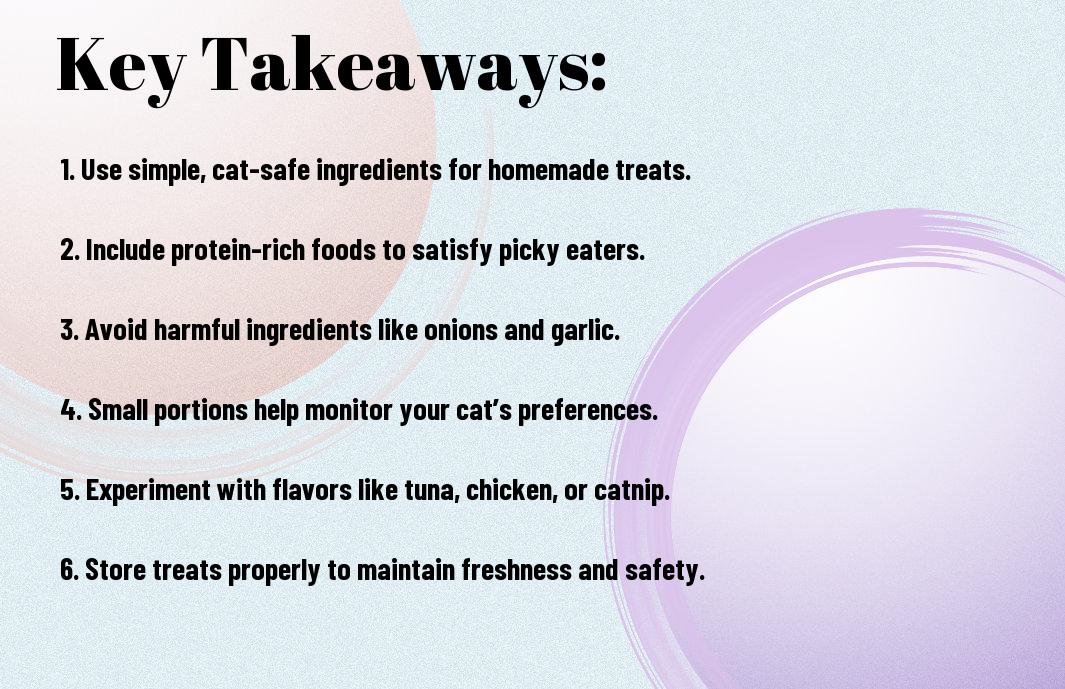
Understanding Picky Eaters
While some cats seem to devour anything put in front of them, others can be notoriously finicky about their food. Understanding the nuances of picky eaters will help you tailor your homemade treats to appeal to your feline’s unique tastes. By identifying your cat’s preferences and aversions, you can create a more enjoyable and satisfying treat experience that strengthens your bond and keeps your pet happily engaged during snack time.
Common Reasons for Picky Eating
Picky eating in cats can stem from various factors, including their genetics, previous experiences with food, or even changes in their environment. Some cats may be more sensitive to texture or flavor, causing them to reject certain treats. Additionally, health issues like dental problems or gastrointestinal sensitivity can impact their willingness to eat, leading them to develop specific preferences.
The Importance of Healthy Treats
About being mindful of the ingredients in your cat’s treats is vital for their overall health and well-being. Choosing healthy options ensures that your feline friend receives the nutrients they need without unnecessary additives or harmful ingredients.
Importance of healthy treats cannot be understated; they play a significant role in your cat’s daily diet and long-term wellness. By opting for nutrient-rich ingredients, you help maintain a healthy weight and contribute to a shiny coat and strong immune system. Avoiding artificial preservatives and fillers is vital, as these can lead to allergies or digestive issues. By creating homemade treats with wholesome ingredients, you’re investing in your cat’s health and happiness, reinforcing a positive relationship with food.
Essential Ingredients for Homemade Cat Treats
You want to create tasty and nutritious homemade cat treats that your feline friend will love. To ensure that your treats are both appealing and healthy, it’s important to choose the right ingredients. Focusing on high-quality proteins and natural flavor enhancers will not only satisfy your cat’s picky palate but also contribute to their overall well-being. Let’s probe the vital components needed for crafting these delightful treats.
Protein Sources
Protein is the foundation of any healthy cat treat, as felines need a diet rich in high-quality protein to thrive. You can choose from various sources such as chicken, turkey, fish, or even egg. These proteins are not only palatable but also packed with the vital amino acids your cat requires for optimal health. Always opt for fresh and lean cuts of meat to keep the treats nutritious.
Flavor Enhancers
Above all, flavor enhancers are vital in making cat treats irresistible. Ingredients like catnip, cheese, or even a dash of broth can elevate the taste, drawing your cat’s interest. Mixing these flavor enhancers with your protein source creates a mouthwatering treat they’ll be excited to enjoy.
In fact, using natural flavor enhancers can significantly improve the acceptance of your homemade cat treats. Ingredients such as catnip can stir up enthusiasm in felines, while a bit of cheese can tap into their love for creamy textures. Additionally, adding broth, whether chicken or fish, can moisten the treats, making them more palatable. Just be cautious to choose low-sodium broth to avoid excessive salt intake. With the right extras, your picky eater will find it hard to resist these delightful snacks!
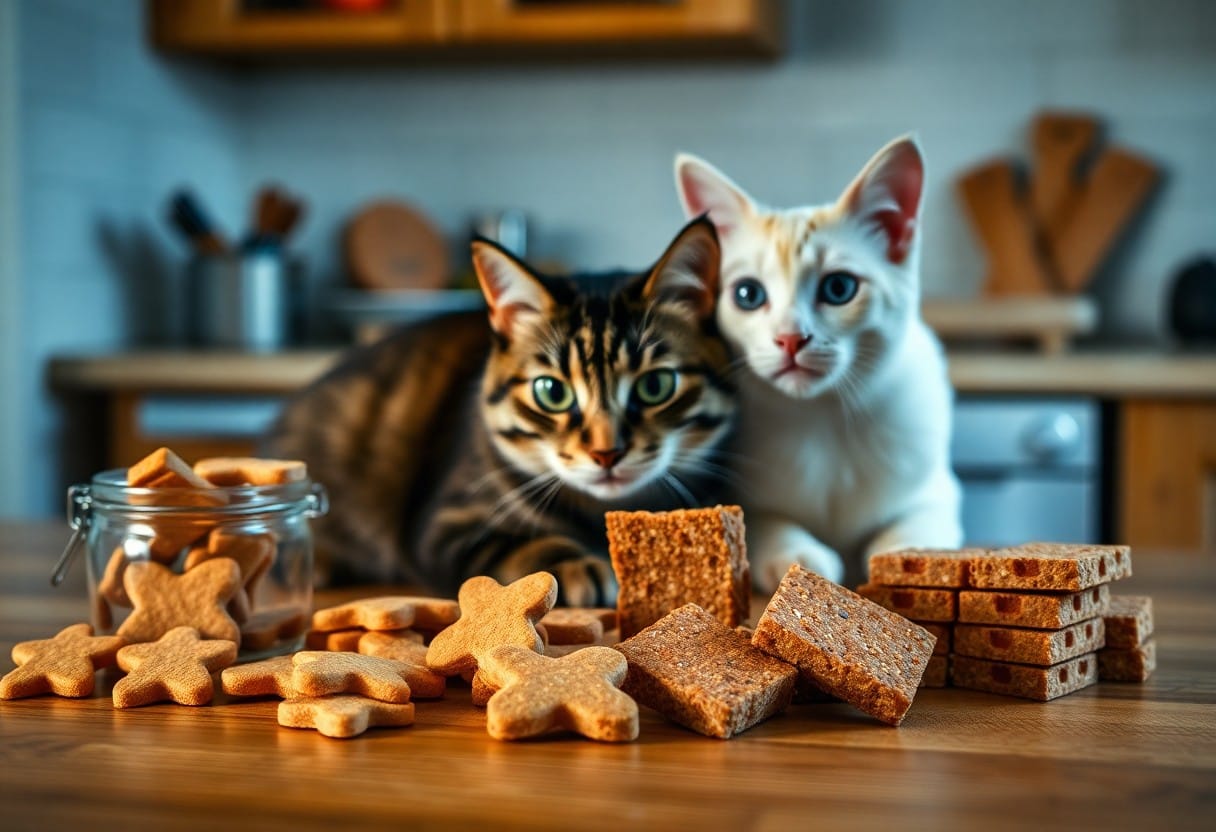
Easy Recipes for Homemade Cat Treats
Despite many store-bought options filled with artificial ingredients, making homemade cat treats ensures you know exactly what your picky eater is consuming. By using simple ingredients, you can easily whip up delicious flavors that will entice your feline friend. With these easy recipes, you can cater to your cat’s unique tastes and preferences while keeping their diet healthy and nutritious.
Crunchy Chicken Bites
Homemade chicken bites are perfect for your cat if they prefer something crunchy and savory. By blending cooked chicken breast with oat flour and baking them until golden, you create irresistibly crunchy treats that your pet won’t be able to resist. The combination of natural ingredients ensures a wholesome snack that supports your cat’s health, keeps their teeth strong, and satisfies their cravings.
Tuna Delights
Beside being a tasty treat, tuna delights can make any cat’s day! These no-bake, soft treats are made using canned tuna, which many felines find irresistible. Mixing the canned tuna with a bit of whole wheat flour and egg ensures that you create a delightful, protein-packed snack that keeps your cat’s energy levels high.
Further, when preparing your Tuna Delights, make sure to choose tuna packed in water rather than oil, as too much oil can upset your cat’s tummy. Incorporating whole food ingredients allows you to offer your kitty a treat that’s both delicious and nutritious. Just be cautious with the quantity; while tuna is a great protein source, it should not dominate your cat’s diet. Moderation is key for keeping your furry friend happy and healthy!
Tips for Making Treats More Appealing
Unlike some pets, cats can be quite selective about their snacks. To make your homemade cat treats more enticing, consider following these tips:
- Add aromatic herbs or catnip to the mix.
- Use high-quality ingredients to enhance flavor.
- Experiment with textures by mixing crunchy and soft elements.
- Shape treats into fun designs to spark curiosity.
Recognizing your cat’s preferences can greatly increase their interest in your homemade treats.
Cooking Techniques
Along the journey of making cat treats, employing diverse cooking methods can turn simple ingredients into mouthwatering delights. Experiment with baking, boiling, or even air-frying, depending on the desired texture and flavor. Each technique can bring out unique tastes, ensuring that your furry friend will indulge with enthusiasm.
Presentation Matters
Before serving your treats, consider the presentation, as it plays a vital role in enticing your feline friend. Use colorful plates or fun shapes to make the treats visually appealing. Additionally, you could place the snacks in areas where your cat enjoys spending time to increase their interest.
Presentation can significantly impact your cat’s willingness to try new treats. Use brightly colored dishes, interesting shapes, or even a sprinkle of catnip on top to draw their attention. Serving treats in a special spot can also create positive associations, reinforcing the experience. Maintain a clean and appealing environment, as this will promote excitement around mealtime. Ensuring that your cat’s snacks are attractive and engaging can lead to successful taste tests and promote curiosity in trying new flavors.
Storing and Preserving Homemade Treats
Once again, ensuring the longevity of your homemade cat treats is key for keeping them fresh and safe for your furry friend. Proper storage will help maintain their flavor and texture while preventing spoilage. By following a few simple guidelines, you can enjoy the benefits of your homemade treats without compromising quality.
Best Storage Practices
Practices you should follow include using airtight containers to keep moisture out and storing treats in a cool, dry place. If you make larger batches, consider separating them into smaller portions, which will help minimize exposure to air each time you reach for a treat. A freezer can also be a great option for longer-term storage.
Shelf Life of Treats
Among the many factors that affect the shelf life of your homemade treats are the ingredients used and the storage method chosen. Treats made with perishable ingredients may not last as long, so it’s best to be mindful of what you include. Regularly check for any signs of spoilage before offering them to your cat.
Storing your homemade treats properly can significantly impact their shelf life. Treats made with ingredients like meat or dairy typically last between 3 to 7 days in the pantry, while those stored in the freezer can last up to three months. Always check for any signs of mold or an off smell before feeding them to your cat, as these can indicate spoilage. By following these storage guidelines, you can ensure your treats remain both safe and delicious for your picky eater.

Engaging Your Cat with Treats
Many cat owners overlook the potential of treats to stimulate their feline friends’ minds and enhance their playtime. Treats can be more than just a reward; they can foster interaction and promote bonding between you and your cat. Utilizing different flavors and textures will keep your picky eater interested and engaged, turning mealtime into a fun experience. By incorporating treats creatively, you can encourage your cat to exercise and explore, making every day exciting.
Using Treats for Training
On a practical note, treats serve as an excellent incentive when training your cat. You can reinforce positive behaviors by rewarding them with a tasty snack right after they perform a command or trick. This approach helps your cat associate good behavior with a delightful reward, making them more likely to repeat it in the future. Select flavors that your cat enjoys to make training sessions more effective and enjoyable.
Interactive Treat Dispensers
By utilizing interactive treat dispensers, you can turn treat time into an engaging activity for your cat. These devices challenge your feline friend to think and work for their food, providing mental stimulation while also encouraging physical activity. Not only do they satisfy your cat’s instinct to hunt and forage, but they also help manage weight by promoting slower eating. It’s important to choose dispensers that ensure safe access to treats, avoiding those with small parts that could be a choking hazard. With interactive treat dispensers, you’ll find your picky eater more engaged and excited about their treats!
To wrap up
Following this guide, you can create delicious homemade cat treats that even your pickiest eater will adore. By using simple ingredients and easy recipes, you can ensure your feline friend enjoys healthy and tasty snacks while avoiding store-bought options that may contain unwanted additives. Experiment with various flavors and textures to see what your cat enjoys most, and make treat time a rewarding experience for both of you. Your effort in making these treats not only strengthens your bond but also keeps your cat happy and healthy.
FAQ
Q: What are some easy recipes for homemade cat treats that picky eaters might enjoy?
A: There are several simple recipes you can try that cater to picky eaters. One option is tuna treats, made by mixing one can of tuna (in water) with an egg and some flour until you form a dough. Roll it out and cut it into small shapes before baking at 350°F for about 10-12 minutes. Another recipe involves using shredded chicken, mixed with a bit of pureed pumpkin and oat flour, shaping them into tiny balls, and baking them until they are dry and crunchy. Both options are flavorful and healthy, sure to appeal to discerning feline taste buds.
Q: How can I ensure the homemade cat treats I make are healthy for my cat?
A: To guarantee healthy homemade treats, start by using high-quality, natural ingredients without preservatives or additives. Focus on protein sources like chicken, tuna, or salmon, and include healthy additions such as pumpkin or sweet potato for fiber and nutrients. Additionally, avoid ingredients that are toxic to cats, such as onions, garlic, or chocolate. A well-balanced treat will provide flavor without compromising your cat’s health.
Q: How should I store homemade cat treats to maintain their freshness?
A: Storing homemade cat treats properly is key to keeping them fresh. Once cooled, store the treats in an airtight container to prevent any moisture from getting in. You can keep them at room temperature for a few days or in the refrigerator for up to a week. For longer storage, consider freezing the treats in a single layer and then transferring them to a freezer-safe bag, which allows you to take out only what you need while maintaining their freshness.
